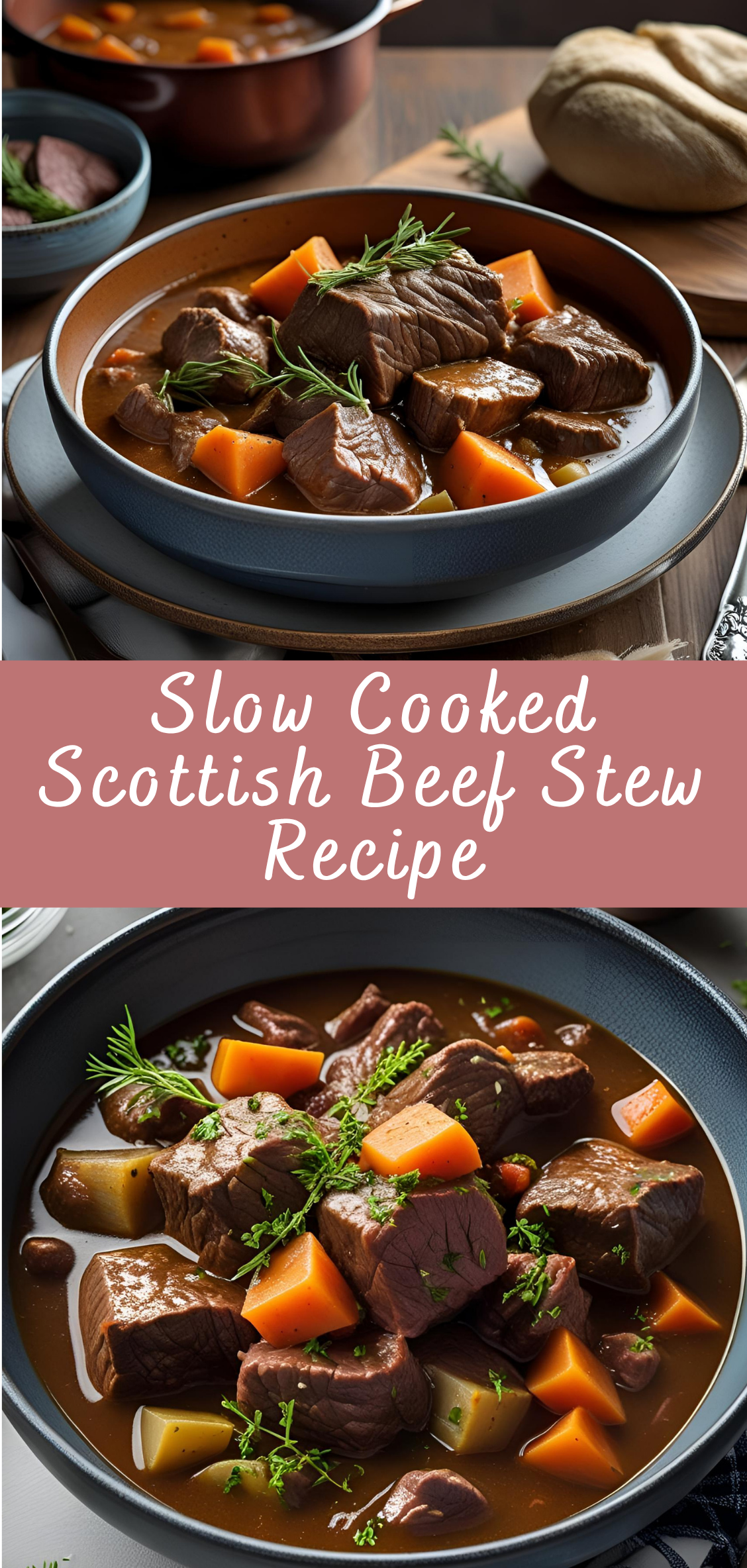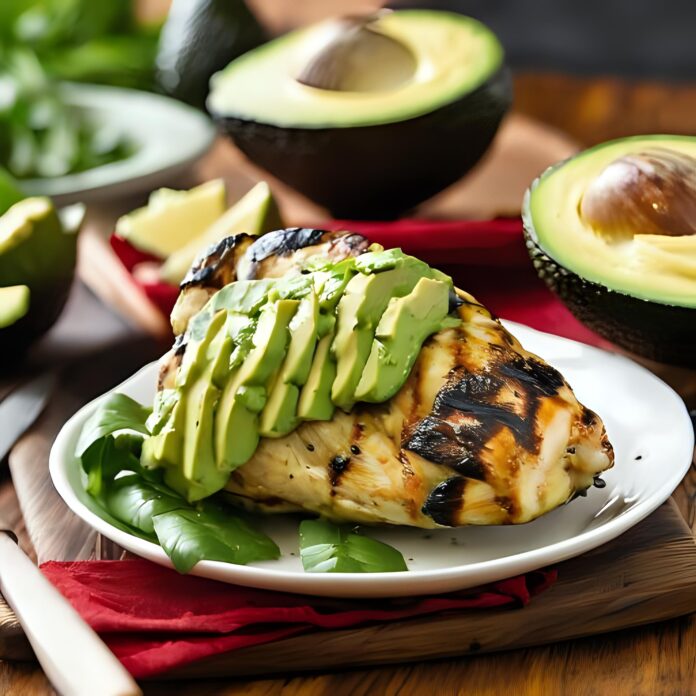Slow Cooked Scottish Beef Stew Recipe
In the windswept Highlands of Scotland, where the landscape is as rugged as it is breathtaking, hearty meals have long played a vital role in sustaining families through long winters and unpredictable weather. Among the most cherished of these comforting dishes is the traditional Scottish beef stew—a rustic, slow-cooked masterpiece that has endured the test of time. More than a recipe, this stew represents generations of resilience, resourcefulness, and a deep connection to the land.

A proper Scottish beef stew is the embodiment of slow food. It begins with simple, honest ingredients: well-marbled cuts of beef, root vegetables freshly pulled from the soil, fragrant herbs, and rich stock or ale to bind it all together. But what transforms these humble components into something extraordinary is time. As the stew simmers low and slow—either in a heavy-bottomed pot over the hearth or a modern slow cooker on your kitchen counter—it develops an incredible depth of flavor, softens every texture, and weaves the ingredients into a warm, cohesive whole.
Rooted in tradition, the dish has long been a staple of Scottish households, especially in rural areas where hearty fare was essential for energy and warmth. In the past, cooks would often rely on what they had on hand: inexpensive beef cuts like chuck or shin, hearty vegetables like carrots, neeps (turnips), and potatoes, and flavorings sourced from the garden or larder. Ale or barley was sometimes added to stretch the stew further, lending it extra richness and body.
While some regional variations exist—some incorporating lamb or game meat, others featuring oats, kale, or dumplings—what remains consistent is the philosophy behind the dish: wholesome food made with patience and care. It’s a recipe that invites families to gather, a dish that warms both the body and the spirit, and a symbol of the Scottish way of life.
Today, the Scottish beef stew continues to evolve, bridging the gap between heritage and contemporary home cooking. With the advent of slow cookers and pressure cookers, this once time-intensive recipe can now be made with minimal hands-on effort, yet still retain its deeply traditional character. It’s an ideal dish for busy families, cozy gatherings, or solo nights when only something deeply nourishing will do.
In this comprehensive guide, we’ll walk through the full process of making a classic Slow-Cooked Scottish Beef Stew from scratch. From selecting the right cut of beef and chopping the vegetables with purpose, to layering in flavor through seasoning and technique, every step is explored in detail. We’ll also look at optional additions—from ale to barley to fresh herbs—and offer tips on how to adjust the recipe to your dietary needs or regional ingredient availability.
You’ll find suggestions for accompaniments too—what bread to serve alongside, how to make traditional suet dumplings if desired, and what to do with any leftovers (if you’re lucky enough to have any). Along the way, this guide will provide insights into the history and culture that shaped this dish, celebrating both its utility and its rich culinary legacy.
In an age of fast food and fleeting trends, the slow-cooked Scottish beef stew is a powerful reminder of the value of taking time—to prepare a meal, to share it, and to honor the stories that come with it. It invites us to slow down, savor the moment, and appreciate the deeply satisfying art of home cooking.
So whether you’re of Scottish descent or simply someone in search of the perfect cold-weather meal, this recipe welcomes you to experience a piece of Scottish tradition. Prepare to fill your kitchen with warmth and your table with comfort.
Let’s begin.
Slow Cooked Scottish Beef Stew: Detailed Step-by-Step Instructions
Part 1: Selecting and Preparing Ingredients
Choosing the Right Beef Cut
A good stew starts with the right cut of beef. For slow cooking, you want a cut that becomes tender and flavorful over hours of gentle simmering. Traditional choices include:
-
Chuck: Well-marbled, flavorful, and ideal for long cooking.
-
Brisket: Slightly leaner but rich in flavor.
-
Shin (Shank): Rich in connective tissue, which breaks down to create a luscious, gelatinous broth.
Avoid lean cuts like sirloin or tenderloin; they can dry out during slow cooking.
Ingredients Checklist
-
2 lbs (900 g) beef chuck or shin, cut into 1½–2 inch cubes
-
3 tablespoons all-purpose flour (for dredging)
-
2 tablespoons vegetable oil or beef dripping
-
2 large onions, coarsely chopped
-
3 cloves garlic, minced
-
4 large carrots, peeled and cut into chunks
-
3–4 medium potatoes (preferably waxy), peeled and chopped into chunks
-
2–3 large swedes (rutabaga/turnips), peeled and diced
-
2 celery stalks, chopped
-
1–2 tablespoons tomato paste
-
4 cups (1 liter) beef stock or broth
-
1 cup (240 ml) Scottish ale or stout (optional but traditional)
-
2 teaspoons dried thyme or 1 tablespoon fresh thyme leaves
-
2 bay leaves
-
Salt and black pepper to taste
-
Fresh parsley, chopped, for garnish
Part 2: Preparing the Beef
Step 1: Cut and Dredge the Beef
-
Pat the beef cubes dry with paper towels to ensure good browning.
-
Place the flour in a shallow bowl or plate.
-
Toss the beef cubes lightly in the flour, coating all sides. Shake off excess.
Tip: The flour coating helps create a thicker stew sauce and promotes caramelization when searing.
Part 3: Browning the Beef
Browning is essential to develop deep, savory flavors through the Maillard reaction.
Step 2: Heat the Cooking Vessel
-
Use a large, heavy-bottomed pot or Dutch oven for even heat distribution.
-
Heat the oil or beef dripping over medium-high heat until shimmering but not smoking.
Step 3: Brown the Beef in Batches
-
Add beef cubes in a single layer, avoiding overcrowding (work in batches).
-
Sear for 3–4 minutes per side until all sides are golden brown.
-
Remove browned beef to a plate and set aside.
Note: Browning the meat properly adds complexity and color to your stew.
Part 4: Preparing the Vegetables and Aromatics
Step 4: Sauté the Onions and Garlic
-
In the same pot, reduce heat to medium.
-
Add onions and celery; sauté until soft and translucent, about 5–7 minutes.
-
Add garlic and cook for another 1–2 minutes until fragrant.
Step 5: Add Tomato Paste
-
Stir in tomato paste and cook for 2 minutes to deepen flavor and remove raw taste.
Part 5: Building the Stew
Step 6: Return Beef and Add Liquids
-
Return the browned beef and any accumulated juices to the pot.
-
Pour in the beef stock and ale (if using), scraping the bottom to loosen any browned bits.
Step 7: Season and Add Herbs
-
Add thyme, bay leaves, salt, and pepper.
-
Stir well and bring to a gentle simmer.
Part 6: Slow Cooking the Stew
Step 8: Simmer or Transfer to Slow Cooker
-
For stovetop cooking:
-
Reduce heat to low and cover.
-
Let simmer gently for 2 hours, stirring occasionally.
-
-
For slow cooker:
-
Transfer the stew mixture to your slow cooker.
-
Cook on low for 6–8 hours or high for 4–5 hours, until beef is tender.
-
Part 7: Adding Root Vegetables
Step 9: Incorporate Carrots, Potatoes, and Swede
-
Add the root vegetables about halfway through cooking (after the first 2 hours on stovetop or 3–4 hours in slow cooker) so they don’t overcook.
-
Stir gently and continue cooking until vegetables and beef are fork-tender.
Part 8: Final Seasoning and Thickening
Step 10: Adjust Consistency and Flavor
-
Check the seasoning and add salt and pepper if needed.
-
If the stew is too thin, remove the lid for the last 30 minutes of cooking to reduce the liquid. Alternatively, mix 1 tablespoon of cornstarch with 2 tablespoons cold water, stir into stew, and simmer gently until thickened.
Part 9: Serving and Garnishing
Step 11: Prepare to Serve
-
Remove bay leaves and discard.
-
Ladle the stew into warm bowls.
Step 12: Garnish
-
Sprinkle freshly chopped parsley over each serving for color and freshness.
-
Serve alongside crusty bread, traditional oatcakes, or buttered mashed potatoes for an authentic Scottish experience.
Part 10: Tips for Success and Variations
-
For extra richness, add a splash of heavy cream or a knob of butter at the end.
-
Substitute ale with a robust red wine for a slightly different flavor profile.
-
Include pearl barley during cooking for added texture and heartiness.
-
For a lighter version, replace beef with venison or lamb.
Slow Cooked Scottish Beef Stew Recipe
In the windswept Highlands of Scotland, where the landscape is as rugged as it is breathtaking, hearty meals have long played a vital role in sustaining families through long winters and unpredictable weather. Among the most cherished of these comforting dishes is the traditional Scottish beef stew—a rustic, slow-cooked masterpiece that has endured the test of time. More than a recipe, this stew represents generations of resilience, resourcefulness, and a deep connection to the land.
Ingredients
- 2 lbs (900g) beef chuck, cut into 1½-inch cubes
- 2 tablespoons all-purpose flour
- Salt and pepper, to taste
- 2 tablespoons vegetable oil or olive oil
- 1 large onion, chopped
- 3 cloves garlic, minced
- 4 large carrots, peeled and cut into chunks
- 3 large potatoes, peeled and cut into chunks
- 2 celery stalks, chopped
- 1 cup pearl barley (optional but traditional)
- 4 cups beef broth or stock
- 1 cup stout beer (like Guinness) or additional beef broth
- 2 tablespoons tomato paste
- 1 teaspoon dried thyme
- 2 bay leaves
- Fresh parsley, chopped (for garnish)
Instructions
1. Prepare the Beef:
- Toss beef cubes with flour, salt, and pepper until coated.
- Heat oil in a large skillet over medium-high heat.
- Brown beef in batches until well-seared on all sides. Transfer to slow cooker.
2. Sauté Aromatics:
- In the same skillet, add onions and garlic, sauté until softened and fragrant (3–4 minutes).
- Transfer to slow cooker.
3. Add Vegetables & Liquids:
- Add carrots, potatoes, celery, and pearl barley to slow cooker.
- Stir in beef broth, stout beer, tomato paste, thyme, and bay leaves.
4. Cook:
- Cover and cook on low for 7–8 hours or high for 4–5 hours, until beef is tender and vegetables are cooked through.
5. Finish & Serve:
- Remove bay leaves.
- Adjust seasoning with salt and pepper.
- Garnish with fresh parsley before serving.
Notes
- Pearl barley adds a lovely texture and thickens the stew; omit if you prefer.
- Substitute stout beer with more beef broth if you want a milder flavor.
- Serve with crusty bread or traditional Scottish tattie scones.



